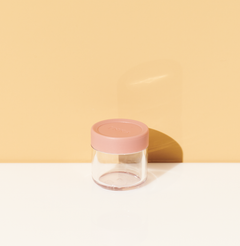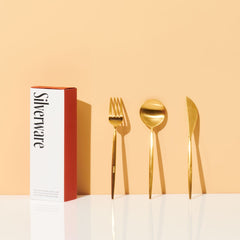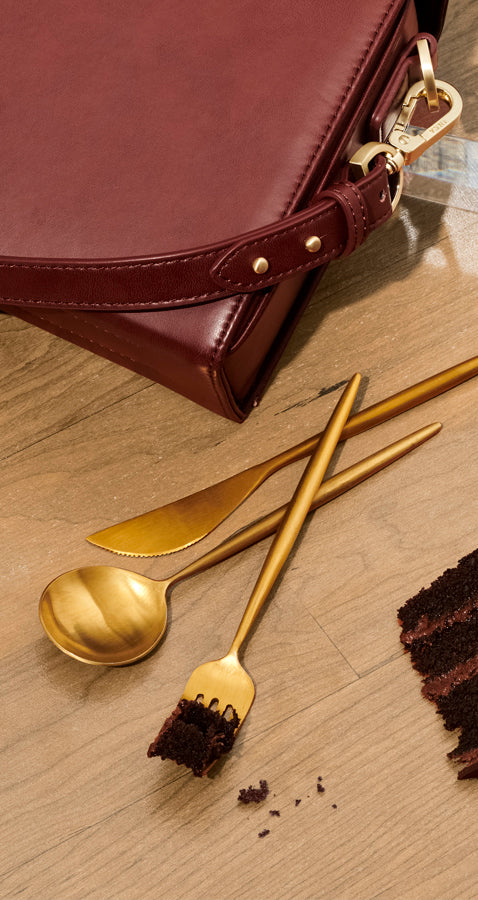If you eat food, chances are you’ve eaten something that came in plastic.
Plastic comes in different shapes and sizes, but it’s broadly grouped into seven types—that’s what the little number in the recycling symbol that’s etched onto the packaging is all about. Even things that don’t look like they contain plastic actually do—like paper coffee cups. That shiny stuff on the inside that keeps your matcha from dripping onto your winter whites? You guessed it, plastic. You use this stuff every day.
At Inka, we use certain plastics in our products too, so, naturally, we have a lot of feelings about which plastics are safe and which aren’t. Here’s a quick breakdown of what each little number means, so you too can speak the language:
--
Plastic #1: PET
Aka PETE or polyethylene terephthalate. Thin flexy plastic used for things like soda bottles—it keeps oxygen out, so your seltzer stays bubbly, but it can let cancer in. Scientists say that PET is ‘okay’ on the first use, but if you keep using it (like refilling your Poland Spring bottle with more water), it can leach carcinogenic, hormone-disrupting phthalates into your water, which you end up drinking. Hot tip: phthalates suck. Phthalates are chemicals that make plastics soft and flexible, but they also can screw with your insides. In animal studies, phthalates have been shown to damage the liver, kidneys, lungs, and reproductive system. Gah.
Inka’s Take: stay away

Plastic #2: HDPE
Also known as "high-density polyethylene". The plastic used for milk jugs, shampoo bottles, and other thicker plastics. Starting with the good news, HDPE is recyclable and much safer for food and drink than PET. As for the bad news, some studies show that it contains xenoestrogens, which imitate estrogen— the female reproductive hormone— and could potentially disrupt hormonal balance.
Inka’s Take: use with care

Plastic #3: PVC
PVC (Polyvinyl Chloride) is super, super strong and bulked-up enough to be used as a construction material (think plumbing, piping, flooring).
And remember the phthalates from before? When you add them to PVC, it gets soft and flexible enough to become what most people call ‘vegan leather’. That’s right folks, most vegan leathers are made of hard plastic with some carcinogens added for fun. (Hard plug: that’s not the kind of ‘vegan leather’ Inka uses.)
Also, PVC is bad… like really bad. It’s known to cause some serious health and environmental risks and, in addition to phthalates, it contains BPA, which is widely avoided due to its implications on our health. Yikes.
Inka’s Take: avoid at all costs

Plastic #4: LDPE
Also known as low-density Polyethylene. The softer, clearer, and more flexible version of HDPE (#2); like if HPDE had a yoga teaching cousin. It most commonly makes the six-pack rings you see in the ocean, and plastic wrap.
Remember what we said about hidden plastic linings for drinks and cups? LDPE is also used for that. LDPE is thought to be a safer kind of plastic than others, but it’s also pretty hard to recycle.
Bonus Plastic: LLDPE (aka linear low-density polyethylene)
If LDPE is HPDE’s yoga teaching cousin, LLDPE is LDPEs acrobatic, contortionist twin. It’s the plastic that’s used in most of the 200 billion plastic bags thrown away every year.
Inka’s Take: use with care, because the environment matters too.

Plastic #5: PP (Polypropylene)
Like your favorite bathing suit, this plastic can handle the heat. It’s known for being pretty stable and safe—it’s used in a ton of baby products (and in our saucepot caps!) and also in menstrual care (what?!).
Unfortunately, this is one of the least recycled plastics, even though it is recyclable.
Inka’s Take: safe to use, but reuse, then recycle!

Plastic #6: Polyestrene
Polyestrene is also known by its not-cute brand name: Styrofoam. You might still see it around in some egg cartons, but you probably see it less if you live in NYC— they banned it for being so goddamn awful.
Completely unrecyclable, Polyestrene has the scary side effect of having a brain and nervous system toxicant that is released when it's heated up— remember when you used to grab a coffee in a Styrofoam cup? The toxicant can also affect your genes, lungs, liver, and immune system.
Inka’s Take: hard pass.

Plastic #7: Others
Number 7's are different, and they’re not like any other plastic. Hair flip.
But actually, #7 is for plastic that doesn’t fit into other categories, like bioplastics and more recently invented plastics. Because these plastics are so expensive, they’re used a lot less often than the cheap stuff and there’s far less regulation around them. Sometimes they get a bad rep because loose regulations mean they could literally be made with anything: BPAs, phthalates, or other nasty stuff— but there are also #7s that are superior to all others.
At Inka, we use Tritan by Eastman plastic, a #7 plastic that’s not only US-made and BPA-free, but also free from BPS— another bisphenol commonly used to replace BPA, but still totally toxic. Tritan is one of the only plastic companies that had an entire team dedicated to researching their plastic to ensure its safety, and it’s since been approved by the USDA, the National Science Foundation, the European Food Safety Authority, and multiple health ministries in Asia. Phew.
Inka’s Take: If the #7 plastic they use is Tritan by Eastman, we think it’s the best option.

Single-use plastics are everywhere. And a lot of the time, they’re really useful! It’s hard to avoid them, so what’s more important is to choose the plastics you use every day carefully. If you’re using it more than once or exposing it to heat (like a microwave or dishwasher), make sure it’s a tested plastic, like the ones we use in our food containers at Inka that are free of toxins. Both your health and the environment rely on it.
And, of course, you can reach out and ask us questions. It’s our job to help and we love doing our job.
Sources:
Harvard Health Publishing. “Is Plastic a Threat to Your Health?” Harvard Health,
“Plastic Resins & Types of Packaging.” Plastic Packaging Facts,














